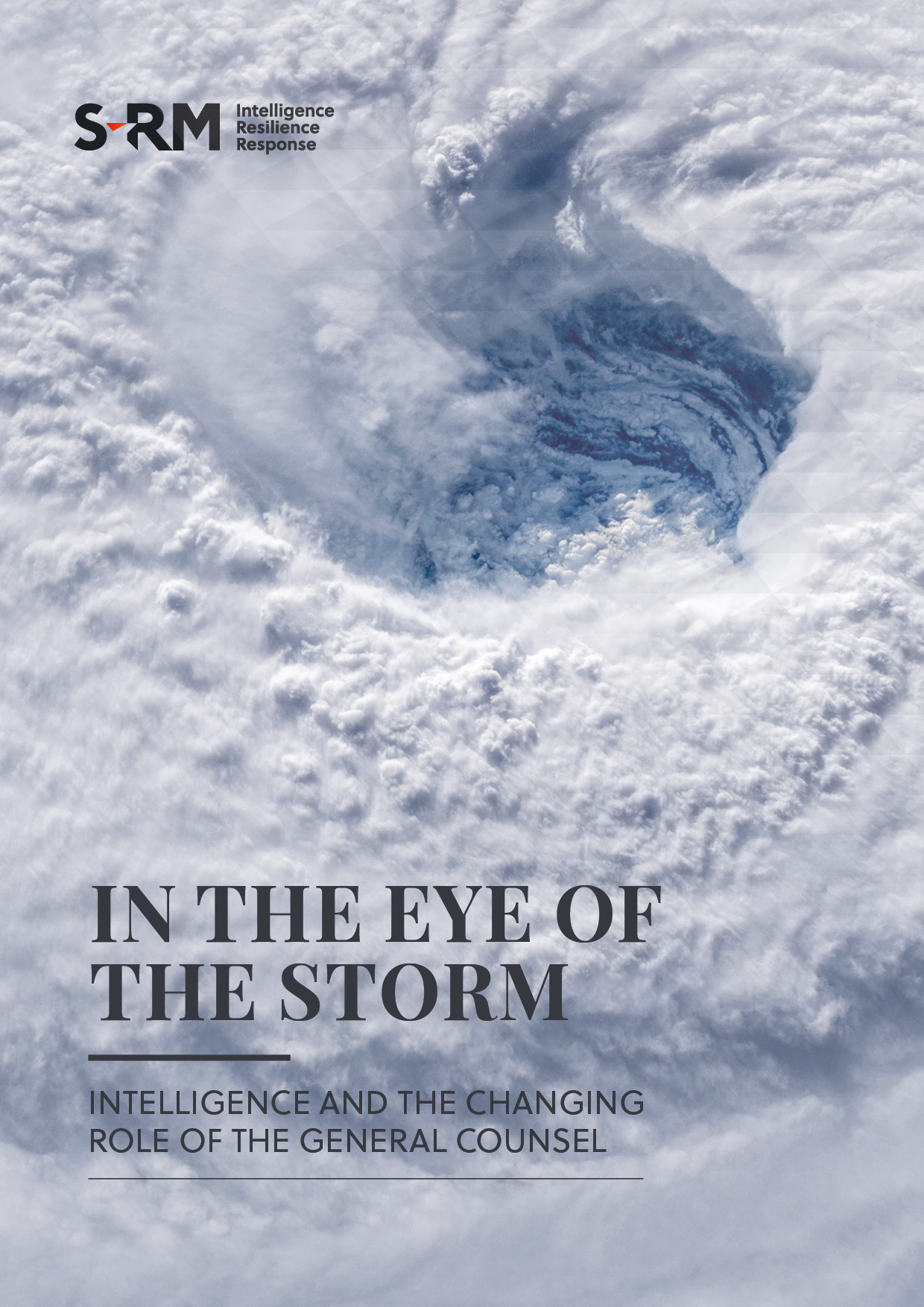MARCUS FISHBURN, S-RM's Global Practice Head of Disputes and Investigations discusses ‘kompromat’ as a threat to an organisation’s reputation and how it can be mitigated.
The practice of intelligence-gathering will be most familiar to readers as a service which they draw upon to mitigate risk, ensure compliance with regulatory and legal standards, and protect their business from reputational risk. However, there are less scrupulous providers and buyers of these services in the market, and to be safe general counsel should consider what hostile actions might be being taken by competitors, activist investors or rogue employees.
These include ‘dark PR’ campaigns, hostile takeovers, and efforts by competitors to undermine your business or your brand. Having access to your own trusted sources of intelligence can be critical to understanding these threats and limiting their damage.
negative PR Campaigns and the Wider Context
Occasional bad press is an unfortunate fact of corporate life. Journalists will always have column inches to fill, and rightly or wrongly the spotlight may fall on your company from time to time. But if the timing is suspicious, aligning to derail a commercial enterprise; if the benefit to a particular competitor is obvious; if the content is demonstrably false, or if confidential information has been leaked, then it is important to ask the question: is this part of a coordinated attack?
The court of public opinion is one of many battlegrounds in a dispute, and a negative PR campaign can sometimes be the vanguard of a coordinated attack in the press, the courts, or at the corporate level. You need to understand the campaign and, if possible, its wider context and objectives in order to prepare your defences.
The world of ‘dark PR’ is a murky one, and often falls outside the scope or experience of an in-house legal team, or even a corporate communications team. But good investigative work can tell you where it is coming from and what to expect next.
'The court of public opinion is one of many battlegrounds in a dispute, and a negative PR campaign can sometimes be the vanguard of a coordinated attack in the press, the courts, or at the corporate level.'
|
'KOMPROMAT' is information intended to inflict reputational damage. In the corporate context, it usually refers to spurious allegations published online under the guise of journalism. Kompromat is typically unsupported by evidence or otherwise unverifiable. |
'Dark PR' as an industry
The phrase ‘dark PR’ itself originated in Russia, and it is there that the practice is most engrained in the business culture. Smear campaigns are increasingly common in Eastern Europe, the Middle East and Asia, and by no means unheard of in Western Europe or the USA. But in Russia they have been refined to an art form – or, rather, a business.
Today, there is a sophisticated and developed market for planting ‘fake news’ (kompromat) to create a media storm while avoiding any legal liability for the outcomes. The focus of this market has shifted from serving political objectives to serving commercial ones, and sophisticated online propaganda and disinformation is increasingly being targeted at companies.
Effective kompromat usually contains a kernel of truth and often resembles genuine reporting. It can appear in mainstream Russian publications and can even creep into the Western press from there. It is usually instigated by a party’s adversary to discredit them.
Being able to spot, interpret and analyse kompromat is a crucial part of doing business in Russia, but there are salient lessons for other businesses as well, not least because there is compelling evidence to suggest that this business model has been exported to the West. It is usually worth asking the question: is this truly independent journalism and, if not, who stands to benefit?

Social Media and Anonymity
Social media has opened up new channels for misinformation behind a shield of anonymity, and it is often here that the seeds of a negative PR campaign are planted.
In Russia, the platform Telegram is particularly popular, with its various anonymous channels focused on politics or business. Unfortunately, ‘dark PR’ companies quickly cottoned on to the power of these channels, especially if people believed them to be controlled by genuine insiders.
Telegram channels today are often owned by PR companies and operate as paid platforms to distribute damaging stories. If business is slow, they will even publish false information about a business or oligarch of their own accord, before extorting money from the victim to remove it. This practice is so common it even has its own name: ‘blocking.’
On other social media platforms, reams of disinformation are pushed out by content farms in Asia, operating thousands of fake accounts and amplifying the content through search engine optimisation.
Once a rumour has been propagated on a social media platform, the orchestrator might take it to a more mainstream publication in the hope that it will pick up its own momentum and start to attract credible, independent interest. They might pay a friendly journalist to report on the social media ‘chatter,’ republishing it while staying protected from legal liability. Having breathed life into the monster, the orchestrator can then step back and let it wreak its damage with full deniability.
'Social media has opened up new channels for misinformation behind a shield of anonymity, and it is often here that the seeds of a negative PR campaign are planted.'
WHere to find help
If all of this appears overwhelming, rest assured there are steps you can take to get on the front foot. There are straightforward PR measures, such as publishing your own high quality and fact-based content, as well as familiar legal actions, such as getting false content and fake accounts taken down or pursuing defamation proceedings. But there are also several investigative steps you can take to work out who is responsible.
IDENTIFY EARLY EFFORTS
The planning and coordination for ‘dark PR’ campaigns are often quite unsophisticated. Social media channels are ultimately run by individuals, who coalesce to form communities, and this presents an opportunity for the investigator. Anybody attempting to push a particular narrative will create ripples in these communities, which tend to share information freely. The early efforts to kickstart a campaign can include multiple failed approaches, each of which might then be discussed among the owners of social media channels or other platforms.
TAP INTO ONLINE COMMUNITIES
Investigators can obtain intelligence about a campaign by tapping into these communities and also canvassing friendly journalists and communications consultancies. In some cases, investigators can identify not just the perpetrators of a campaign, but also the separate narrative strands being promoted and even the ‘going rate’ for each one. Proof might be hard to come by, but forewarned is forearmed. Knowing who is driving a campaign and understanding its objectives allows you to prepare rebuttals in advance, while avoiding the traps and trigger points that might lead to an escalation.
IDENTIFY DIGITAL FOOTPRINTS
Similarly, if negative media or commentary is being promoted online, there might well be a digital footprint to explore. Information such as IP addresses, usernames, web domains, Google Analytics or source code can all be used to join the dots between anonymous commentary and the people posting it.
JOURNALIST AND NETWORK ANALYSIS
If the critical coverage is not anonymous but purports to be independent, what is the profile of the journalist who is out for blood? Some are well known to act on retainer for a particular communications company or corporate intelligence firm. And, if not, network analysis might reveal such a relationship.
REGULAR MEDIA RESEARCH
The knowledge built up by investigators during their regular media research also allows them to quickly identify kompromat when they see it, and to draw connections between seemingly disparate articles.
An investigations firm with a solid track record in deep media research and extensive contacts in ‘dark PR’ circles will prove a valuable asset if you find yourself in the firing line.
THIS ARTICLE IS PART OF S-RM’S ‘IN THE EYE OF THE STORM: INTELLIGENCE AND THE CHANGING ROLE OF THE GENERAL COUNSEL’ REPORT
DOWNLOAD THE FULL REPORT HERE



.png?width=120&height=120&name=MicrosoftTeams-image%20(11).png)
 Email Marcus
Email Marcus





 @SRMInform
@SRMInform
 S-RM
S-RM
 hello@s-rminform.com
hello@s-rminform.com

